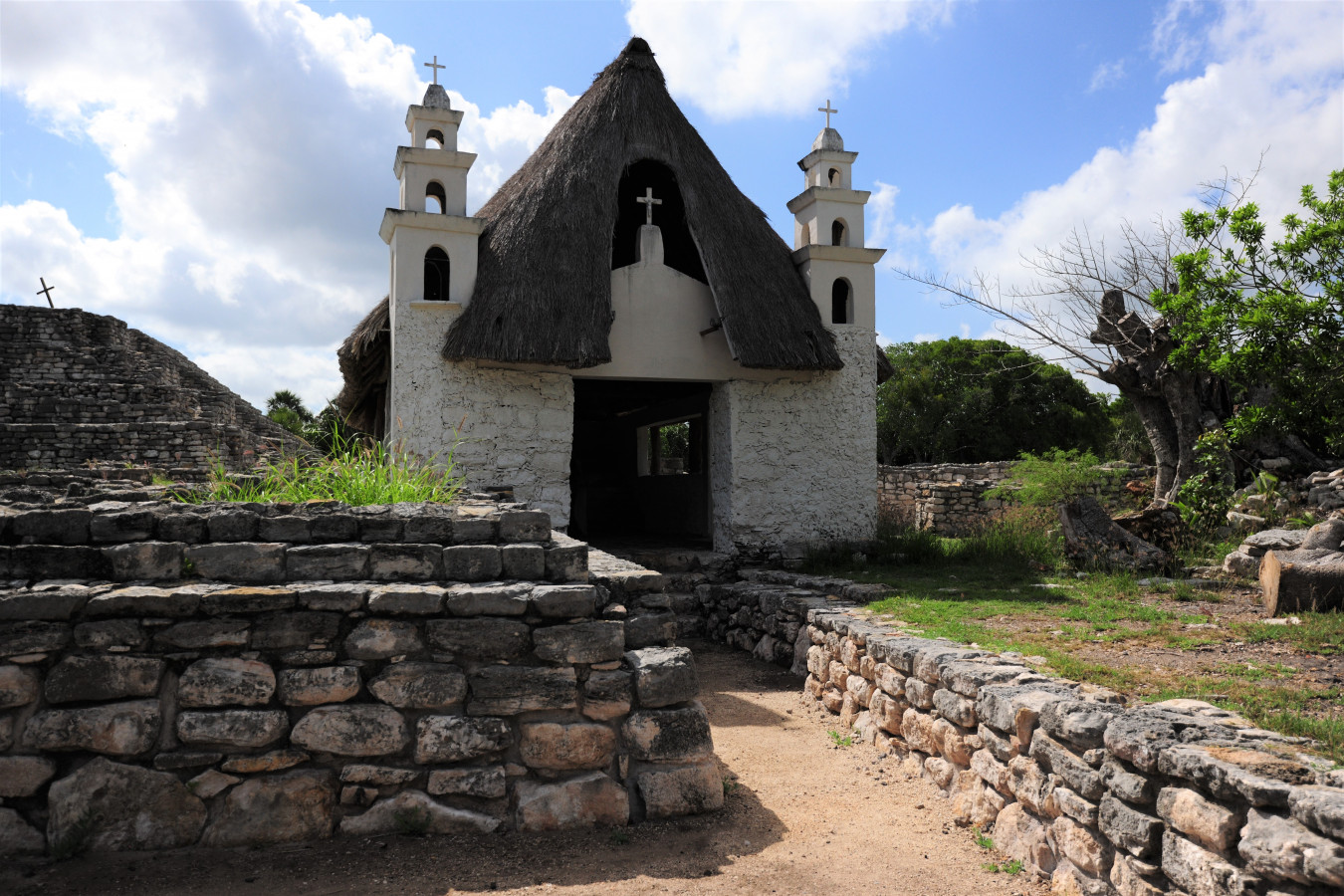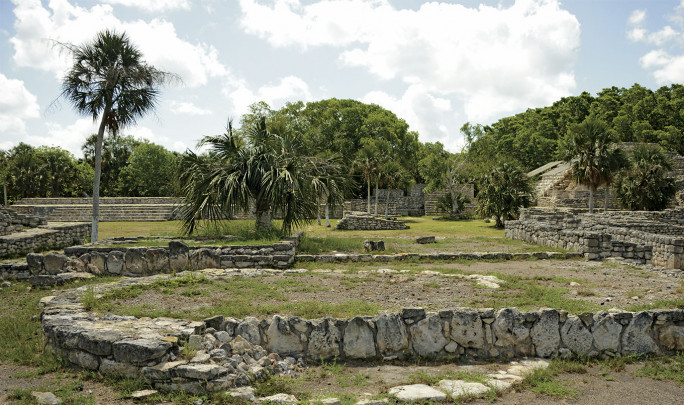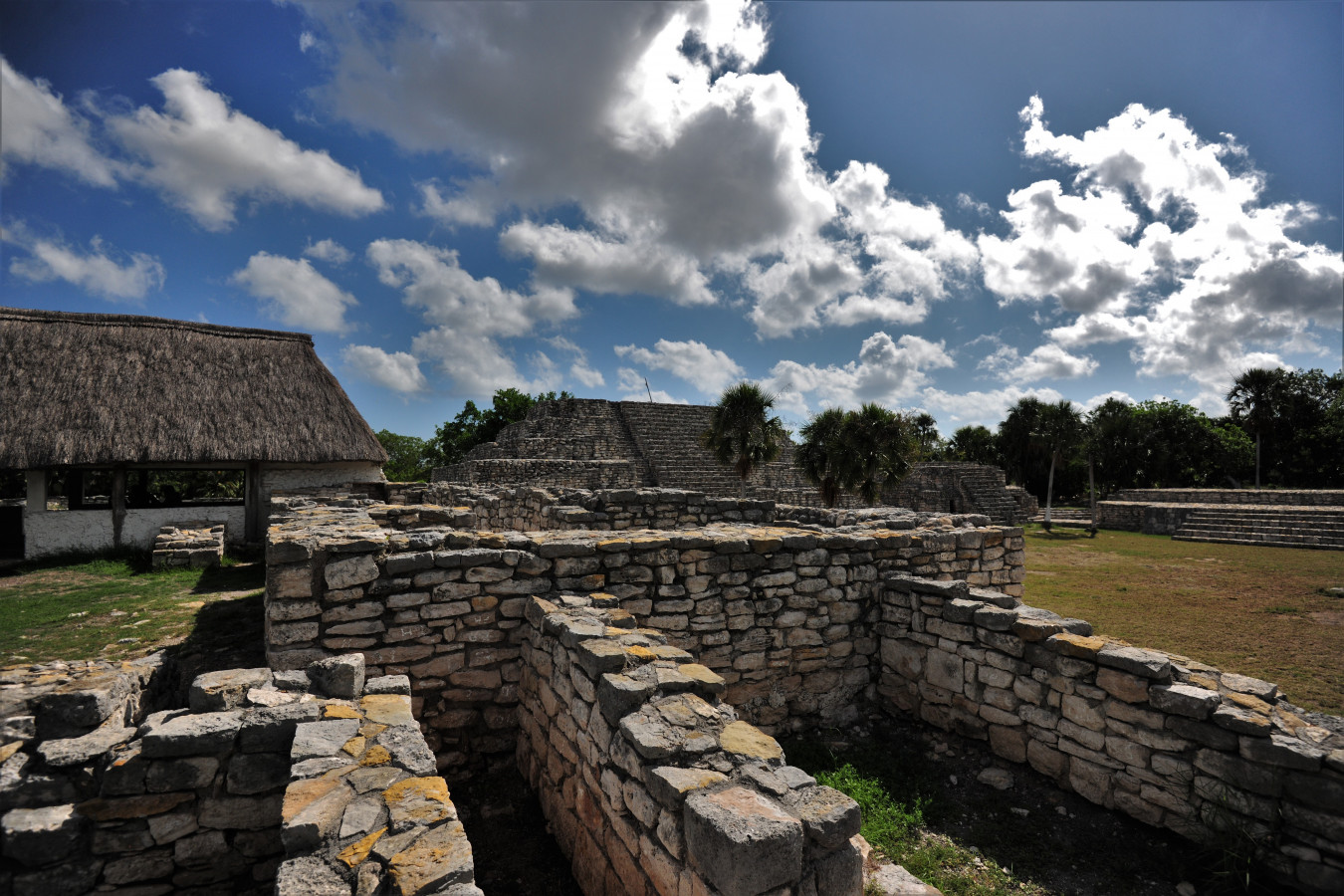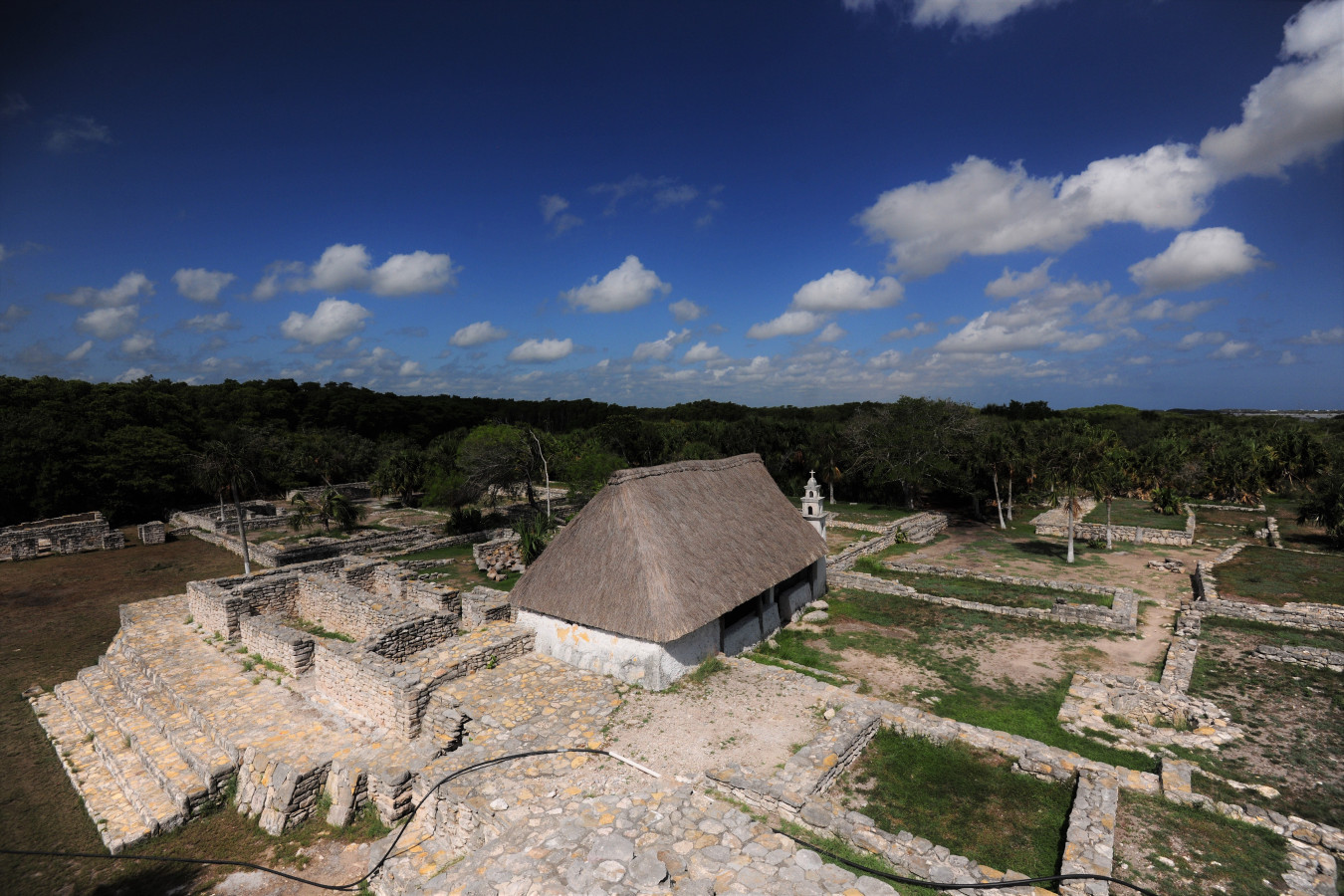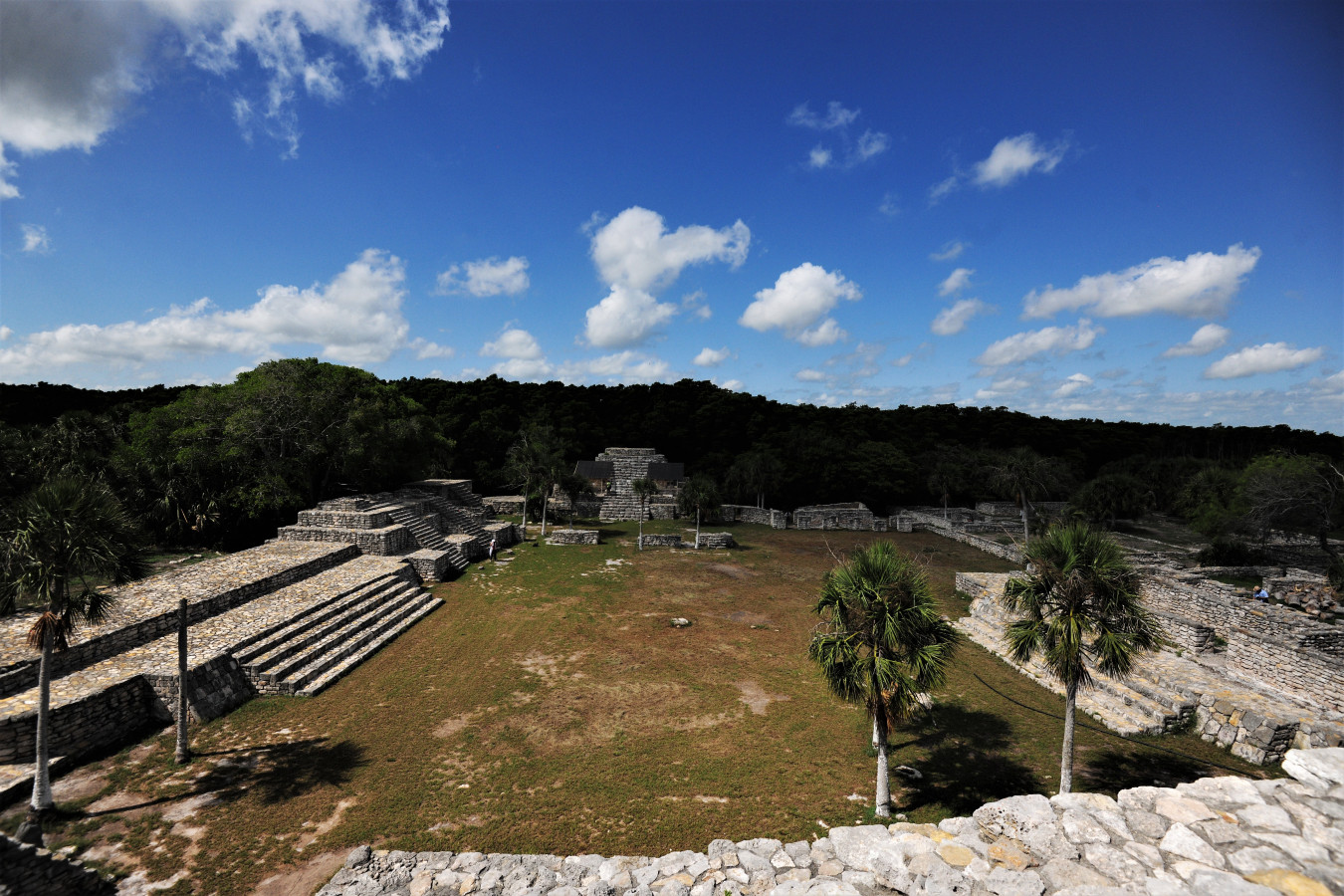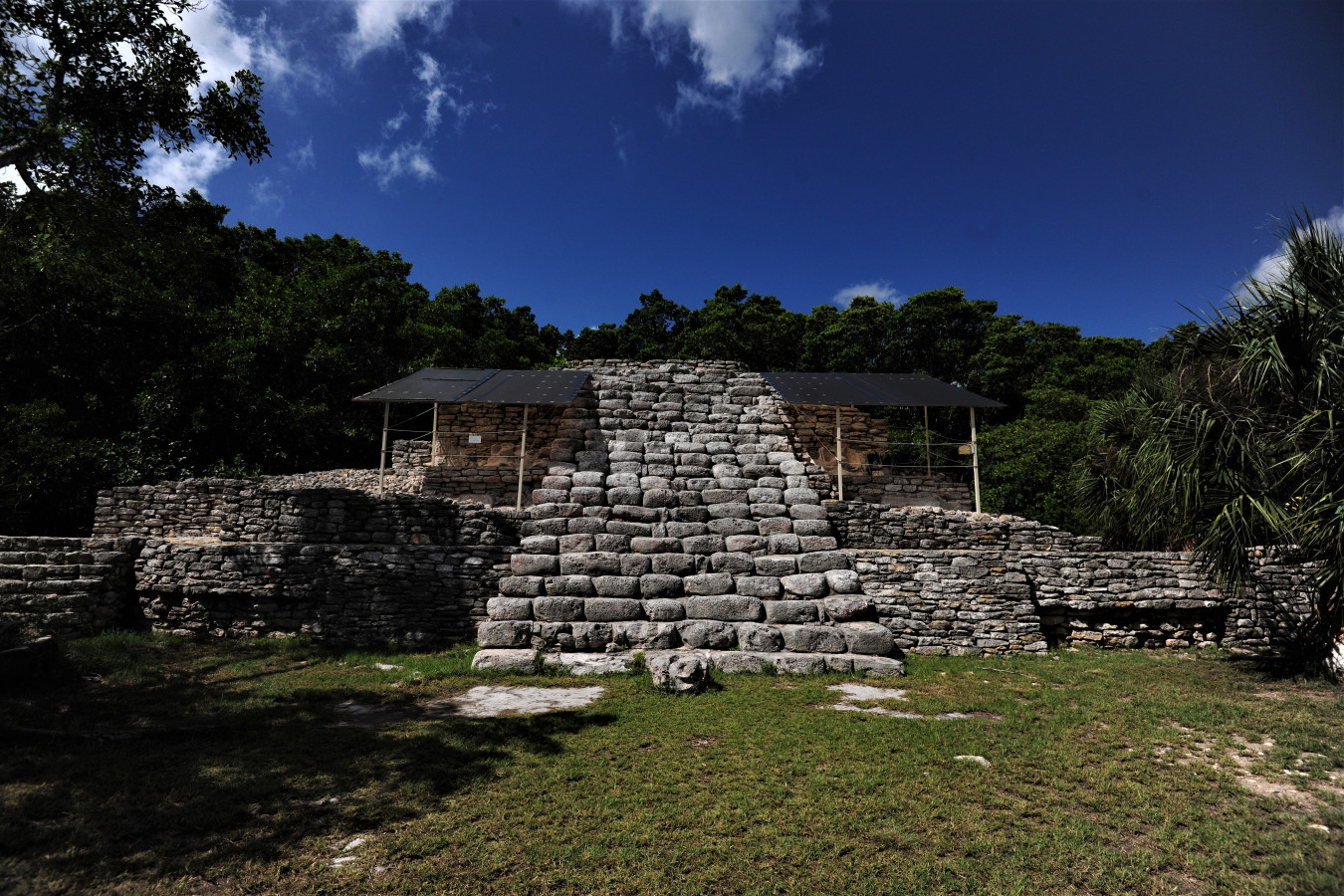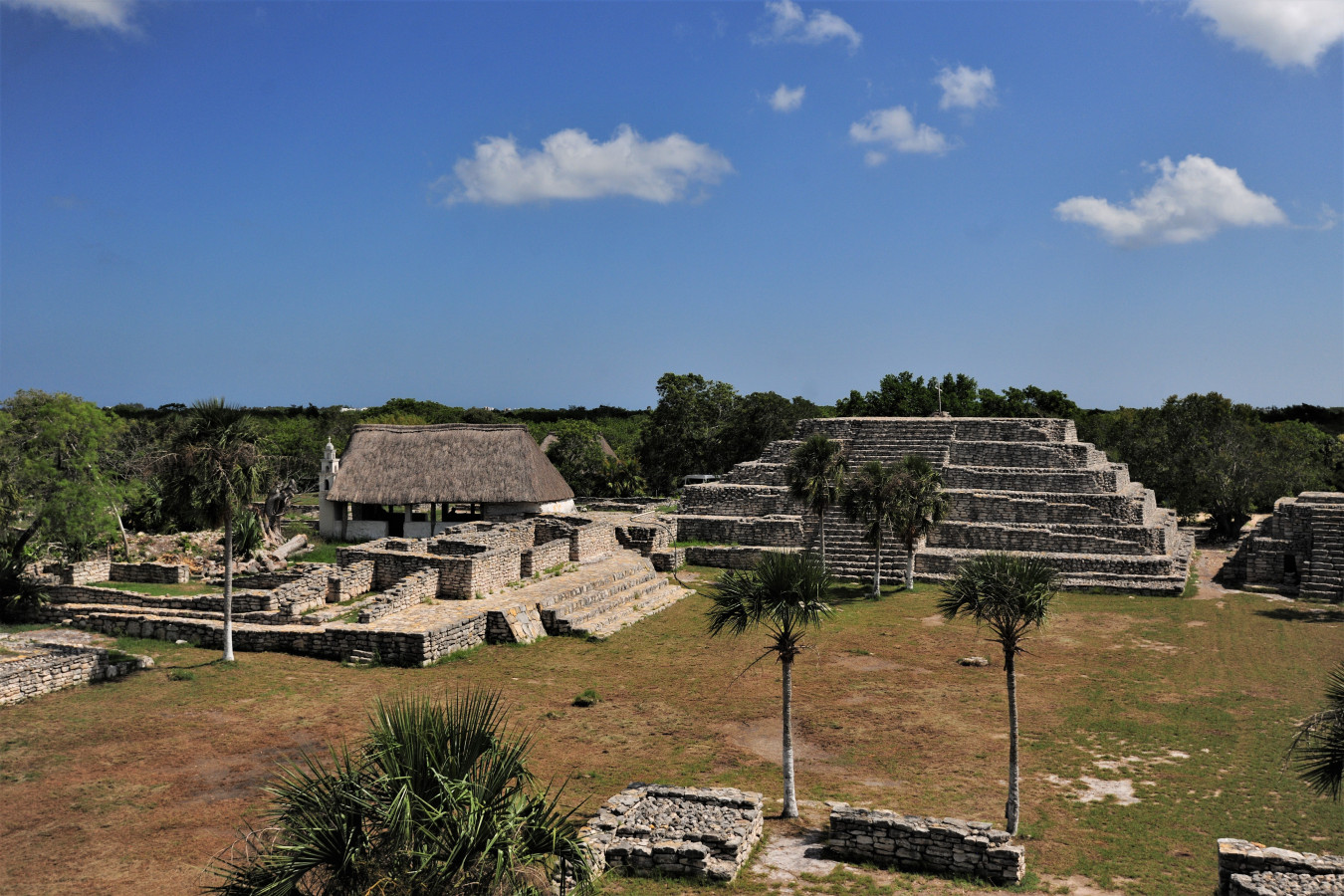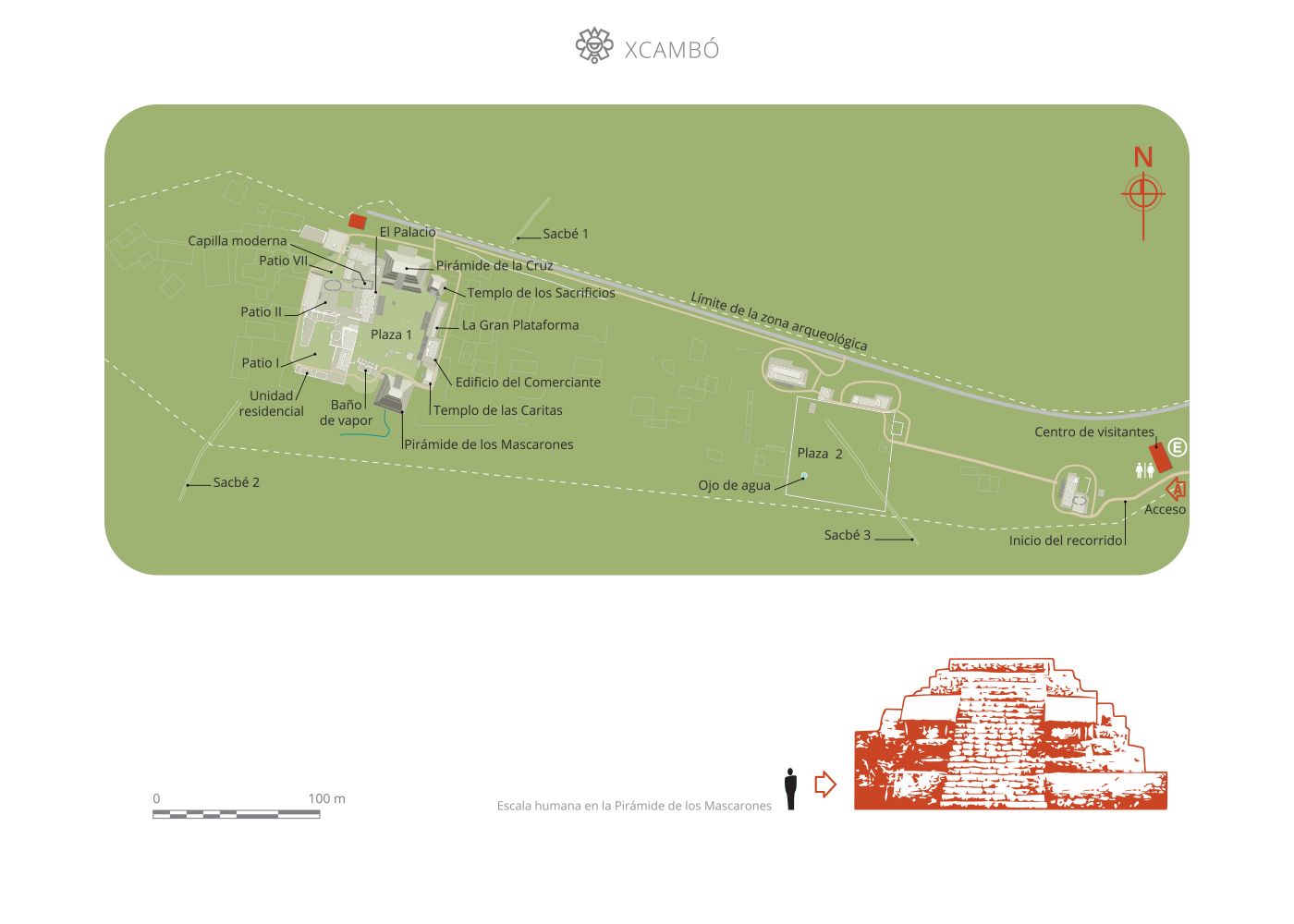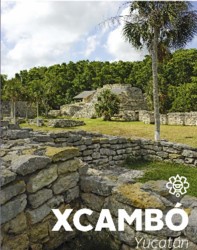Xcambó
The inhabitants of Xcambó settled in a petén, the largest in the region, with numerous useful features: soil, drinking water and materials for their buildings. The site was erected as a commercial port during the Early Classic period (c. 350-550 AD).
About the site
The first reports of Xcambó come from the archaeologist Anthony P. Andrews, who in 1976 toured this site, as well as others along the coast, as part of the Yucatan Archaeological Atlas program.
The site was erected as a commercial port during the Early Classic period. Its function was the administration of salt and marine products, as well as being a center for the stockpiling of goods. Salt production formed the backbone of Xcambó’s economy, as it quickly became the administrative center of the salt flats located along the coast to the north and to the northwest. All the goods stockpiled through large-scale maritime trade also arrived here, with raw materials and manufactured objects transported from distant regions, such as jadeite, shell, obsidian and ceramics.
In Xcambó, the most outstanding architectural features have been identified, like those that characterize the constructions at Early Classic sites in northern Yucatán. From the Late Classic period the site was standardized with the use of architecture made from rough rectangular blocks and flat slabs, which were either laid with dry joints or joined with mortar. Thick layers of stucco were applied to hide the imperfections of the walls, in a similar way to that carried out in the Postclassic.
Xcambó is the only coastal pre-Hispanic site with monumental structures that reveal syncretism between Catholic and Mayan worship. To this day, the inhabitants of Dzemul make a pilgrimage on the last Sunday in May, as tradition says that the Virgin of Xcambó appeared there.
The site was erected as a commercial port during the Early Classic period. Its function was the administration of salt and marine products, as well as being a center for the stockpiling of goods. Salt production formed the backbone of Xcambó’s economy, as it quickly became the administrative center of the salt flats located along the coast to the north and to the northwest. All the goods stockpiled through large-scale maritime trade also arrived here, with raw materials and manufactured objects transported from distant regions, such as jadeite, shell, obsidian and ceramics.
In Xcambó, the most outstanding architectural features have been identified, like those that characterize the constructions at Early Classic sites in northern Yucatán. From the Late Classic period the site was standardized with the use of architecture made from rough rectangular blocks and flat slabs, which were either laid with dry joints or joined with mortar. Thick layers of stucco were applied to hide the imperfections of the walls, in a similar way to that carried out in the Postclassic.
Xcambó is the only coastal pre-Hispanic site with monumental structures that reveal syncretism between Catholic and Mayan worship. To this day, the inhabitants of Dzemul make a pilgrimage on the last Sunday in May, as tradition says that the Virgin of Xcambó appeared there.
Map
Did you know...
- It is the only archaeological zone that was a commercial port and where both public and domestic buildings and the road system can all be seen.
- It was the principal and largest commercial port on the north coast during the Classic period.
- Even after it was abandoned, it remained a place of worship during the Postclassic period.
Directory

